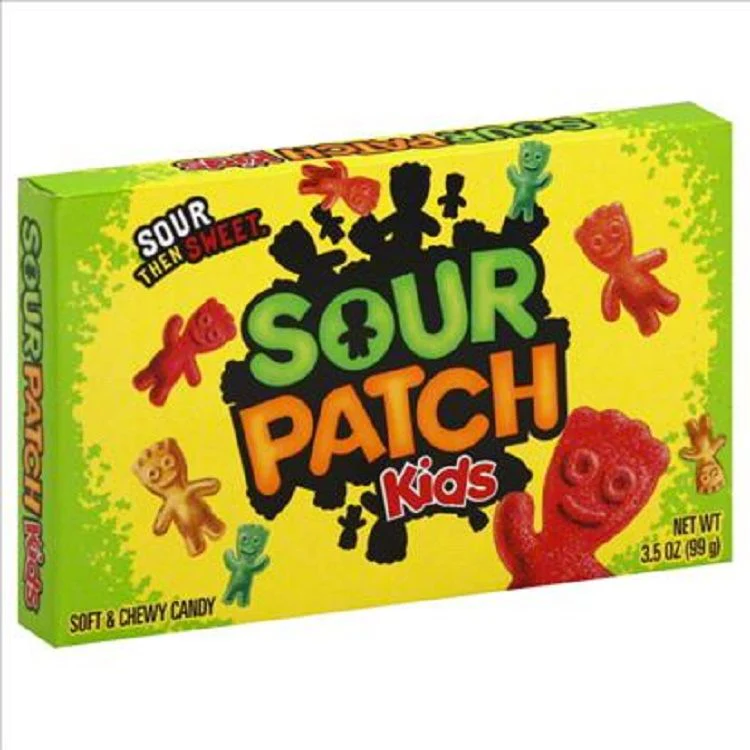
What Is Sour Patch: All About the Staple of American Candy Culture
In the vibrant realm of confectionery, few names conjure as iconic an image as Sour Patch Kids. With their tantalizing balance of tart and sweet, these colorful candies have not only captured the palates of candy lovers across America but also secured a steadfast position in the nation's cultural milieu.
But what is it about these tiny sugar-packed warriors that sustains their allure and cements their place as a staple of American candy culture? This article embarks on a comprehensive journey into the heart of Sour Patch Kids, exploring their origins, marketing ingenuity, cultural impact, and more.
Table of Contents
- Origins and Evolution of Sour Patch Kids
- Marketing Strategies and Brand Success
- Cultural Impact and Consumer Behavior
- Conclusion and Future Trends
Origins and Evolution of Sour Patch Kids
Sour Patch Kids' origins trace back to the whimsical imaginings of Frank Galatolie in the swinging 1970s. Originally dubbed "Mars Men," these candies were a nod to the era's burgeoning fascination with extraterrestrial life and space exploration. However, it was in 1985, with a rebranding strategy that would thrust them into the spotlight under a new moniker—Sour Patch Kids—that they truly found their stride.
The transformation from Mars Men to the iconic Sour Patch Kids was not merely a change in name but a pivotal shift in branding and market positioning. This rebranding was a strategic alignment with popular culture, leveraging the cute, relatable image of 'kids' to create a distinct and appealing consumer experience. Over the decades, what began as a novelty has grown into a candy juggernaut, holding strong against competitors with the tantalizing duality of their sour punch and sweet release—a combination that keeps fans coming back for more.
Marketing Strategies and Brand Success
The marketing acumen behind Sour Patch Kids is as sharp as the candies themselves. In contemporary settings, particularly the digital age, the brand has thrived through a dynamic engagement strategy that encompasses everything from influencer collaborations to viral social media stunts. Farrah Bezner, the astute head of business ventures at Mondelēz International, has emphasized the significance of tapping into pop culture and digital platforms to maintain relevance among younger audiences.
A cornerstone of their marketing strategy is leveraging user-generated content, particularly on platforms like TikTok, where trends can catapult a product into the public eye within hours. The brand’s playful image is further accentuated through campaigns that encourage participation, generating both excitement and brand loyalty. Moreover, Sour Patch Kids have been skillfully integrated into various cultural moments and spaces, such as movie theaters and Halloween festivities, seamlessly blending into the fabric of American life.
By emphasizing storytelling and relatability, Sour Patch Kids have remained at the forefront of consumer preferences when it comes to sour candy choices. The strategic narrative that the brand weaves—one of mischief, fun, and nostalgia—effectively taps into key emotional triggers that resonate with their diverse consumer base.
Cultural Impact and Consumer Behavior
Sour Patch Kids are more than mere confectionaries; they are a reflection of cultural trends and an influencer of consumer behavior. Across America, these candies are a staple that transcends generational divides, appealing to both the young and the young-at-heart.
In movie theaters, their demand is unmatched, offering a preferred treat to accompany cinematic escapades.
Moreover, Sour Patch Kids do not only appeal to traditional sweet cravings but also embody a unique allure through their distinct taste dynamic—starting sour and ending sweet. This sensory journey affects consumer behavior significantly, creating an emotional rollercoaster that enhances satisfaction and the overall eating experience.
This sour-then-sweet phenomenon might be linked to the broader psychological appeal of contrasting sensations, which has been the subject of various studies in consumer satisfaction and flavor perception. Their ability to adapt to regional preferences, such as the launch of flavors like Sour Patch Grapes or the elusive Blue Sour Patch Kids, further underscores their agility in market adaptation.
Conclusion and Future Trends
In conclusion, Sour Patch Kids' prominent position within the American candy sphere is far from mere happenstance. It is the product of ingenious branding, astute cultural alignment, and an unyielding dedication to consumer experience and satisfaction.
As the candy market continues to evolve, the ability of Sour Patch Kids to adapt and innovate remains paramount. Looking forward, potential trends could include even deeper integration with digital media and personalized consumer interactions.
The future might see Sour Patch Kids further pushing boundaries with region-specific products and innovative flavor profiles, reflecting changing preferences and technological advancements in digital marketing. As Mondelēz International continues to leverage consumer insights and market data, the possibilities for this beloved brand remain bright and exciting.
Such forward-thinking strategies assure that Sour Patch Kids will not only maintain their cultural staple status but also continue to delight, sour then sweet, in the candy aisles to come.
